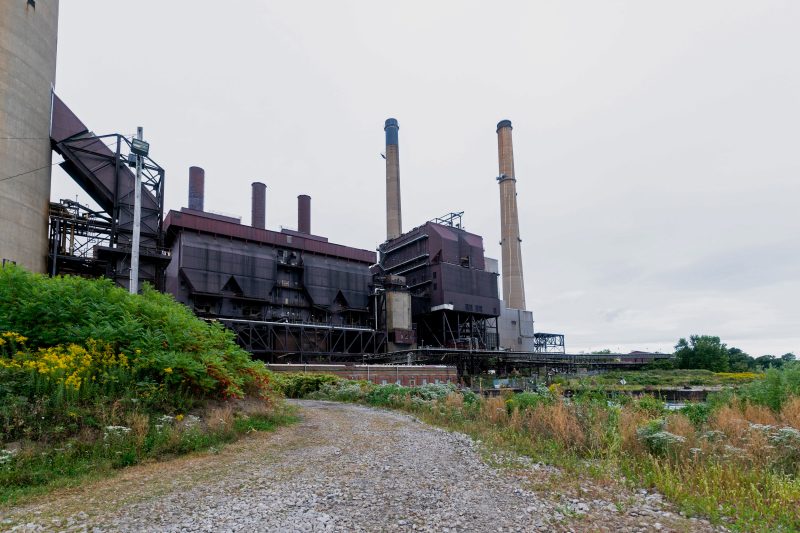President Joe Biden’s landmark climate law is driving outsized clean energy funding into low-income, less-educated and fossil fuel towns, according to a new analysis the Treasury Department released Wednesday.
An estimated 81% of investments in clean projects since the Inflation Reduction Act’s passage last year have been in counties with below-average weekly wages, and 86% are flowing into those with below-average college graduation rates, according to the report seen by NBC News before its release.
In addition, about 70% of clean energy investments since the law’s passage last year have been rolling out in counties where smaller shares of the population are employed, “suggesting weaker labor markets overall,” the report said.
The analysis “shows that funding is going where it’s needed most across the country, not just to the coasts or to wealthy communities,” Treasury Secretary Janet Yellen said in a statement.
The study also found that so-called energy communities — those with historical ties to fossil fuel industries like coal — have seen some of the fastest growth in these investments.
Funding is going where it’s needed most across the country, not just to the coasts or to wealthy communities.
Treasury Secretary Janet Yellen
Using data from the Massachusetts Institute of Technology and the Rhodium Group, a research firm, the Treasury researchers looked at clean energy project announcements made before and after Democrats passed the IRA along party lines in August 2022. The law, the largest package of investments ever passed aimed at slowing climate change in the nation, contains a tax credit for clean electricity development along with a stepped up “bonus” credit for energy communities.
To assess the bonus credit’s impact, the researchers identified 4,729 projects, totaling over $352 billion, between 2018 and June 2023 that would have been or are currently eligible for it, including 713 post-IRA projects worth more than $101 billion.
Within energy communities, the report said, announcements of clean investments grew to an average of $5 billion per month after the IRA was enacted, up from $2 billion beforehand in those areas and $2.5 billion in the rest of the country. In non-energy communities, the monthly increase was about $4 billion after the IRA.
Eric Van Nostrand, a Treasury economist who co-authored the report, said it will take years for the IRA’s full impact to be assessed, but “the data is as encouraging as it could be at this stage that the money is making a difference in the communities that need it most,” he said.
While the report didn’t identify whether the projects in energy communities were in fact tapping or planned to tap the extra tax credit, Van Nostrand said the analysis “suggests the bonus is working as intended.”
As Biden looks toward re-election next year, he is ramping up outreach to small-town voters that have gravitated toward Republicans. In the process, he has touted new investments in rural areas, like the $5 billion his administration rolled out this fall to boost agriculture and infrastructure in these places.
The Treasury report comes two days after the Energy Department unveiled $275 million in funding from the Bipartisan Infrastructure Law to support clean energy projects. On Wednesday, Biden will be in Colorado to champion job creation driven by expanding wind tower manufacturing in the state.
Economists and clean energy experts said the new findings largely show the White House’s overall policy ambition — to accelerate the green transition while improving economic equity — is off to a strong start.
“If you’re trying to minimize the transitional costs of moving to renewable energy, then you probably want to target communities that are going to be hardest hit,” said Mark Curtis, an economics professor at Wake Forest University and a co-author of forthcoming research showing that the vast majority of workers who’ve left “carbon-intensive” jobs in recent decades haven’t moved on to a “green” one.
“It makes sense that those production credits will be going towards areas of the country with lower income,” said Curtis, who commended the IRA for shifting more renewable energy incentives upstream, compared with earlier policies targeting consumers that often benefited wealthier households.
Other policy experts said it’s still an open question whether the economic changes spurred by the law will take effect broadly and swiftly enough to boost Democrats politically next year.
Samantha Gross, director of the energy security and climate initiative at Brookings Institute, a left-leaning think tank, said much of that will hinge on bureaucratic policy moves — like obtaining municipal construction permits — that can be governed by local or partisan forces.
“You have to do that to get steel on the ground,” she said. “It’s an additional challenge that the IRA doesn’t address.”





























